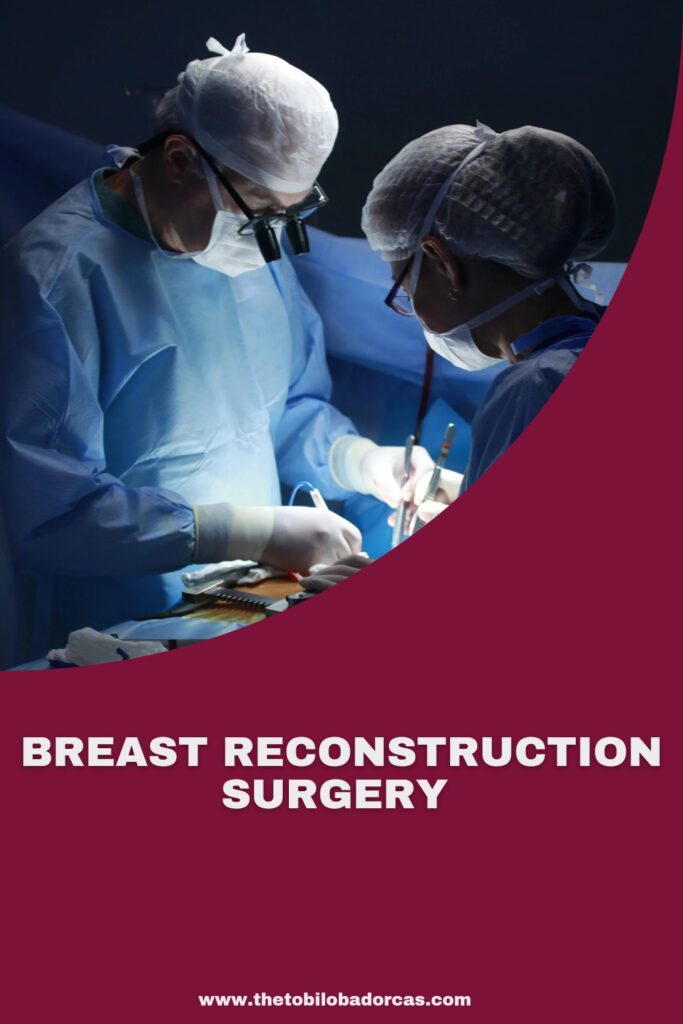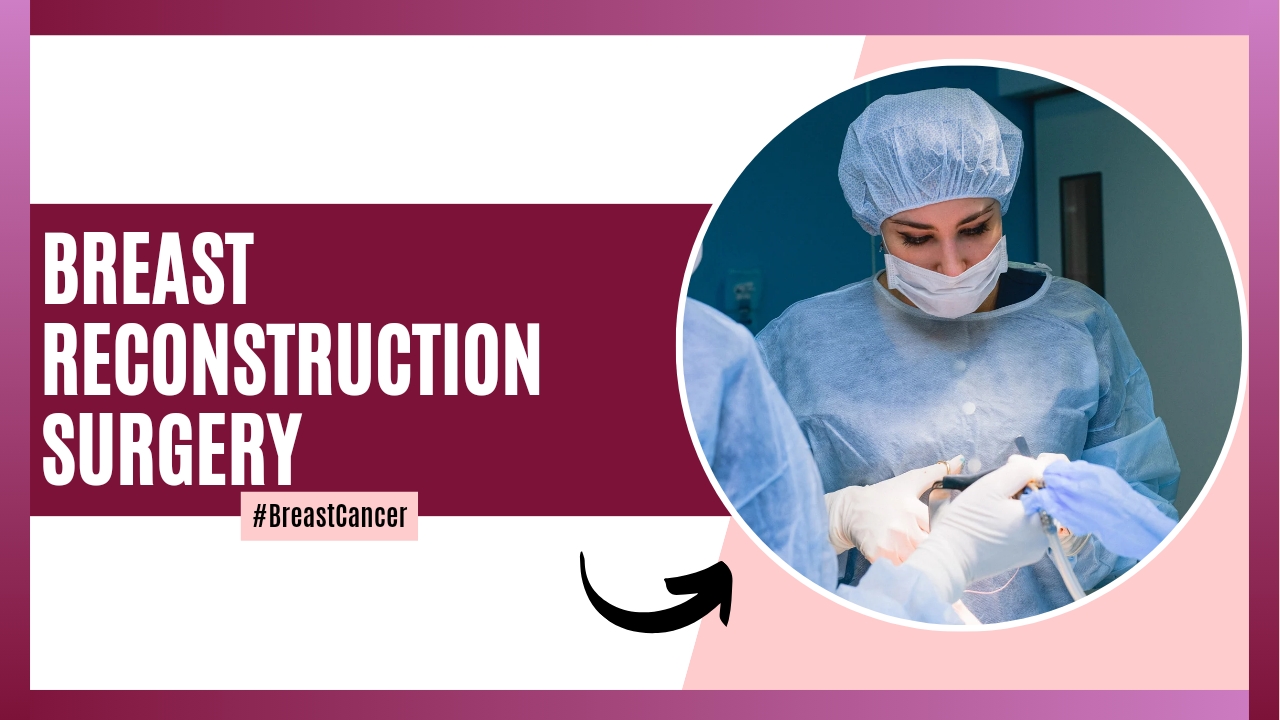Breast reconstruction surgery is a significant step in the journey of many women who have undergone mastectomy or lumpectomy as part of their breast cancer treatment. This procedure aims to restore the shape, appearance, and size of the breast, helping women regain their sense of wholeness and self-confidence. The decision to undergo breast reconstruction is deeply personal and can be influenced by a variety of factors, including medical considerations, personal preferences, and emotional well-being. This blog post provides an in-depth exploration of breast reconstruction surgery, covering the types of reconstruction, the benefits and risks, the surgical process, and the psychological and emotional aspects involved.
Types of Breast Reconstruction Surgery
Breast reconstruction can be broadly categorized into two main types: implant-based reconstruction and autologous (or flap) reconstruction. Each type has its own advantages and considerations, and the choice depends on individual circumstances and preferences.
- Implant-Based Reconstruction: Implant-based reconstruction involves the use of saline or silicone implants to recreate the breast mound. This method is one of the most common approaches to breast reconstruction and can be performed either immediately during the mastectomy or as a delayed procedure.
- Immediate Implant Reconstruction: This procedure is performed at the same time as the mastectomy. After the breast tissue is removed, the surgeon places a tissue expander or an implant directly under the chest muscle.
- Delayed Implant Reconstruction: This option is chosen when the reconstruction is planned for a later date, allowing the patient to recover from the mastectomy first. A tissue expander may be inserted initially to stretch the skin and chest muscle, creating space for the implant, which is placed in a subsequent surgery.
Advantages:
- Shorter surgery and recovery time compared to flap reconstruction.
- Less invasive, with fewer scars and no need for additional donor site surgery.
Considerations:
- Implants may need to be replaced after several years.
- There is a risk of complications such as implant rupture, capsular contracture (scar tissue formation around the implant), and infection.
- Autologous (Flap) Reconstruction: Autologous reconstruction uses the patient’s own tissue, taken from another part of the body, to create the new breast. This tissue is typically taken from areas such as the abdomen, back, thigh, or buttocks.
- TRAM Flap (Transverse Rectus Abdominis Muscle): This method uses tissue from the lower abdomen, including skin, fat, and muscle, to reconstruct the breast.
- DIEP Flap (Deep Inferior Epigastric Perforator): Similar to the TRAM flap, but only the skin and fat are taken, preserving the abdominal muscles.
- Latissimus Dorsi Flap: This method uses tissue from the upper back, which includes skin, fat, and muscle.
- Other Flaps: Tissue can also be taken from the thighs (TUG flap) or buttocks (SGAP flap).
Advantages:
- The reconstructed breast looks and feels more natural because it uses the patient’s own tissue.
- Less risk of long-term complications compared to implants.
Considerations:
- Longer surgery and recovery time.
- More complex procedure with potential for complications at the donor site, such as hernia or muscle weakness.

The Surgical Process
The process of breast reconstruction surgery involves several stages, from initial consultation to post-surgical recovery.
- Consultation and Planning: The first step is a thorough consultation with a plastic surgeon who specializes in breast reconstruction. During this consultation, the surgeon will discuss the patient’s medical history, treatment plan, and personal preferences to determine the most suitable reconstruction method. Factors considered include the patient’s body type, health status, previous surgeries, and lifestyle.
- Pre-Surgical Preparation: Prior to the surgery, patients may need to undergo several preparatory steps, such as medical evaluations, imaging studies, and discussions about anesthesia. The surgeon will provide detailed instructions on how to prepare for the surgery, including guidelines on medications, diet, and activity restrictions.
- The Surgical Procedure: The specifics of the surgery depend on the chosen reconstruction method:
- Implant-Based Reconstruction: If immediate reconstruction is chosen, the mastectomy and implant placement are done in the same surgery. If delayed reconstruction is planned, the tissue expander is inserted first, followed by gradual expansion over several weeks or months. Once the desired size is achieved, a second surgery is performed to replace the expander with a permanent implant.
- Autologous Reconstruction: The surgeon will harvest the donor tissue from the chosen site (abdomen, back, thigh, or buttocks) and use it to reconstruct the breast. Microsurgery may be required to connect blood vessels in the transferred tissue to those in the chest to ensure proper blood flow.
- Recovery and Follow-Up: Recovery times vary depending on the type of reconstruction and the individual patient. Patients can expect some pain, swelling, and bruising, which are managed with medications and appropriate care. The surgeon will provide detailed post-operative care instructions, including guidelines on wound care, activity restrictions, and follow-up appointments.
Benefits and Risks of Breast Reconstruction Surgery
Benefits:
- Restoration of Body Image: Breast reconstruction can help restore the appearance of the breast, improving body image and self-esteem.
- Improved Quality of Life: Many women report an enhanced quality of life and psychological well-being after reconstruction.
- Clothing Fit: Reconstruction can improve the fit and appearance of clothing, making it easier to find suitable garments and feel comfortable in them.
Risks:
- Surgical Complications: As with any surgery, there are risks of complications such as infection, bleeding, and adverse reactions to anesthesia.
- Implant-Related Issues: Implant-based reconstruction carries the risk of implant rupture, capsular contracture, and the need for future surgeries to replace the implants.
- Donor Site Complications: In autologous reconstruction, there may be complications at the donor site, such as hernia, muscle weakness, or scarring.
Psychological and Emotional Aspects
The decision to undergo breast reconstruction is deeply personal and can evoke a range of emotions. Many women experience a sense of loss and grief after a mastectomy, and reconstruction can play a crucial role in the emotional healing process. However, the decision is not without its challenges and considerations.
- Emotional Healing: Breast reconstruction can help women regain a sense of normalcy and wholeness. The restoration of the breast can positively impact self-esteem and body image, which are often affected by the loss of a breast.
- Coping with Expectations: It is important for patients to have realistic expectations about the outcomes of reconstruction. While reconstruction can significantly improve appearance, it may not fully restore the breast to its original state. Open communication with the surgeon about expectations and potential outcomes is crucial.
- Support Systems: Having a strong support system is vital during the reconstruction journey. This can include family, friends, support groups, and mental health professionals. Sharing experiences with others who have undergone similar procedures can provide comfort and encouragement.
- Decision-Making: The decision to undergo breast reconstruction is personal and varies for each individual. Some women may choose not to have reconstruction and instead opt for a prosthesis or embrace their new body image. Respecting and supporting each person’s choice is essential.
Conclusion
Breast reconstruction surgery is a significant step for many women recovering from breast cancer, offering physical restoration and emotional healing. By understanding the types of reconstruction, the surgical process, benefits, risks, and the psychological aspects involved, women can make informed decisions that best suit their individual needs and circumstances. With the right information, support, and care, breast reconstruction can help women regain confidence and move forward with their lives after breast cancer.










What do you think?
It is nice to know your opinion. Leave a comment.